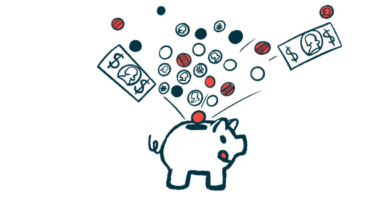I want more diversity among bone marrow transplant donors
Brandi's Blessings, which I founded, helps bring minorities to the registry

After I was diagnosed with aplastic anemia and paroxysmal nocturnal hemoglobinuria (PNH), I was told to consider a bone marrow transplant. My doctor quickly pointed out, however, that there weren’t many minority donors available.
According to the National Marrow Donor Program’s Be The Match registry, you’re more likely to find a match from a bone marrow donor of the same race. “This is because HLA [human leukocyte antigen] markers used in [marrow] matching are inherited. Some ethnic groups have more complex tissue types than others. So a person’s best chance of finding a donor may be with someone of the same ethnic background,” Be The Match states on its site.
But Black and African Americans have just a 29% chance of finding a donor match based on their ethnic background, according to Be The Match. Compare that with white people, who have a 79% chance; Asian or Pacific Islanders, who have a 47% chance; and Hispanics or Latinos, who have a 48% chance.
As a minority, I struggled to find a willing donor. I’ve written about my experience of feeling like one of the lucky ones when I found a match and how it felt when my potential donor said no to me.
This issue was important, and I wanted to address it. So I did. I founded the Brandi’s Blessings nonprofit in 2013 to raise awareness and support blood disorder patients. When applying for grant money, we set out to increase the diversity among potential donors on the National Marrow Donor Registry.
How to encourage someone to join the registry
As I’ve fought the good fight for my own life, I understand how important it is to do this work and help others fight. Donating bone marrow to a person in need is an act of service. People who do it are volunteering to give something to someone who’s not as healthy as them.
As I’ve met with people, I’ve learned to strategize when I’m asking someone to join the registry.
To start with, I educate potential donors on the full process, from beginning to end, to help them understand what being a donor means. Be The Match has a great explanation of the process on its site. Taking the time to explain this process at bone marrow drives can help give potential donors peace of mind and lets me answer any questions they have.
I also work to spread the word at events popular with minorities. Historically Black colleges and universities, the Essence Festival, and Black History Month events are great places to set up a table and educate people on the registry.
I never force anyone to join the registry, though. If they’re hesitant, we send them home with information so they can do their own research. As much as I want minorities to join, I also want them to know what joining means. They must understand that saying yes to saving a person’s life is what’s most important!
The lack of diversity among bone marrow donors is a big issue that doesn’t get a lot of attention. Adding more minorities to the registry will result in many positive outcomes — including saving lives.
If you have other great ideas about how to reach minorities about this topic, please comment below. I’d love to hear your thoughts.
Note: PNH News is strictly a news and information website about the disease. It does not provide medical advice, diagnosis, or treatment. This content is not intended to be a substitute for professional medical advice, diagnosis, or treatment. Always seek the advice of your physician or other qualified health provider with any questions you may have regarding a medical condition. Never disregard professional medical advice or delay in seeking it because of something you have read on this website. The opinions expressed in this column are not those of PNH News or its parent company, Bionews, and are intended to spark discussion about issues pertaining to paroxysmal nocturnal hemoglobinuria.








